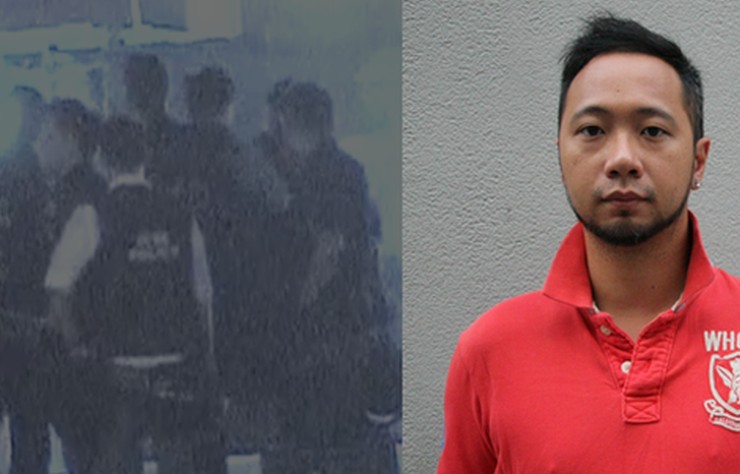Since it was closed off nearly three years ago, the 1,000-square-metre forecourt to the Central Government Offices in Admiralty has become a symbol of Chief Executive Leung Chun-Ying’s fear of and detachment from the people he is supposed to serve. If Leung’s successor, Carrie Lam Cheng Yuet-ngor, were to begin her administration in July by tearing down the three-metre-high fence that has been erected there—giving the square, a flash point in the pro-democracy Occupy movement that paralysed key parts of the city for 79 days in 2014, back to the people for whom it was originally designed—she would be making a grand gesture of reconciliation after five long years of division and polarisation under Leung.

This is exactly what lawmakers on both sides of the aisle have urged her to do, and the chief executive-elect—in stark contrast to the sitting CE, who, citing security concerns, pointedly refuses to reopen the square—says she will consider their request once she assumes office.
Lam would find her dismal popularity figures suddenly soaring as the cameras flashed and rolled during the dismantling of an unsightly barrier that makes a mockery of the “Open Door” design of the CGO complex, which is meant to represent openness and transparency in government.
Yes, that symbolism has seemed more a bad joke than a sincere promise during these years of Leung’s hardline politics of confrontation, but the new administration could begin the difficult work of restoring that promise to Hong Kong’s 7.3 million people in one bold act of creative destruction by removing an ugly icon of division and reopening what is popularly known as “Civic Square.”

Given her stated reluctance to pursue political reform, however, the big problem for Lam would be how to follow up on this act of symbolism with any meaningful substance. Indeed, if the square opens up but the government remains a closed shop, then the post-Occupy political divisions wracking the city will only get worse. Empty symbolism will exacerbate, not heal, those schisms.
Remember, this is the site where tens of thousands of protesters, led by the then 15-year-old Joshua Wong Chi-fung, staged a 10-day rally in August and September of 2012 that eventually forced Leung to shelve his plan for a mandatory patriotic national education curriculum that critics branded as “brainwashing.” This is where the Umbrella Movement was born when a group of students, with Wong again in the vanguard, clambered over the recently erected fence in September of 2014, declaring their intent to “take back” the square. The students failed in their attempt to reopen it, but their actions succeeded in launching the Occupy campaign, whose repercussions continue to haunt the city today.

It is painfully clear that the open wounds of Occupy have yet to heal from public reactions to the five-week prison sentence handed down last year to activist Ken Tsang Kin-chiu for assaulting police officers during the height of the 2014 protests and to the two-year jail terms meted out in February to the seven officers whose subsequent assault on Tsang was caught on film by a television news crew. Tsang, who recently completed his sentence, is still celebrated as a hero by his supporters, even though his form of protest—pouring a foul-smelling liquid thought to be urine on beleaguered police—hardly conformed to the movement’s original slogan, “Occupy Central with Love and Peace.”
As for the seven guilty police officers, they are the recipients of equally ardent backing by fellow officers who staged a 30,000-strong rally to protest their sentences and by blue-ribbon police supporters who see the officers’ actions—punching, kicking and stamping on an already handcuffed, zip-tied suspect—as somehow justifiable.

It was with such extreme positions in the mind that the chairman of the Democratic Party, Wu Chi-wai, dove mouth-first into controversy last week with a call for the chief executive to grant legal amnesty to all those caught up in charges related to the Occupy protests, including the seven jailed officers and the movement’s three founders—academics Benny Tai Yiu-ting and Chan Kin-man and Reverend Chu Yiu-ming—who stand charged with “creating a public nuisance” and face prison terms of up to seven years if they are convicted.
Wu’s ill-considered suggestion was greeted with ridicule, even among some pan-democrats, and he was compelled to retract and apologise for his remarks on the very day he made them.
Legally, of course, Wu’s proposition was a non-starter; that aside, however, the heated reactions to his blundering effort to bring warring parties together showed how raw feelings remain on all sides. Forgiveness and reconciliation are not yet part of the post-Occupy vocabulary.
Reopening the square could mark the beginning of a new kind of conversation. But is that a conversation Lam and the Hong Kong government are ready to have?
Probably not.
